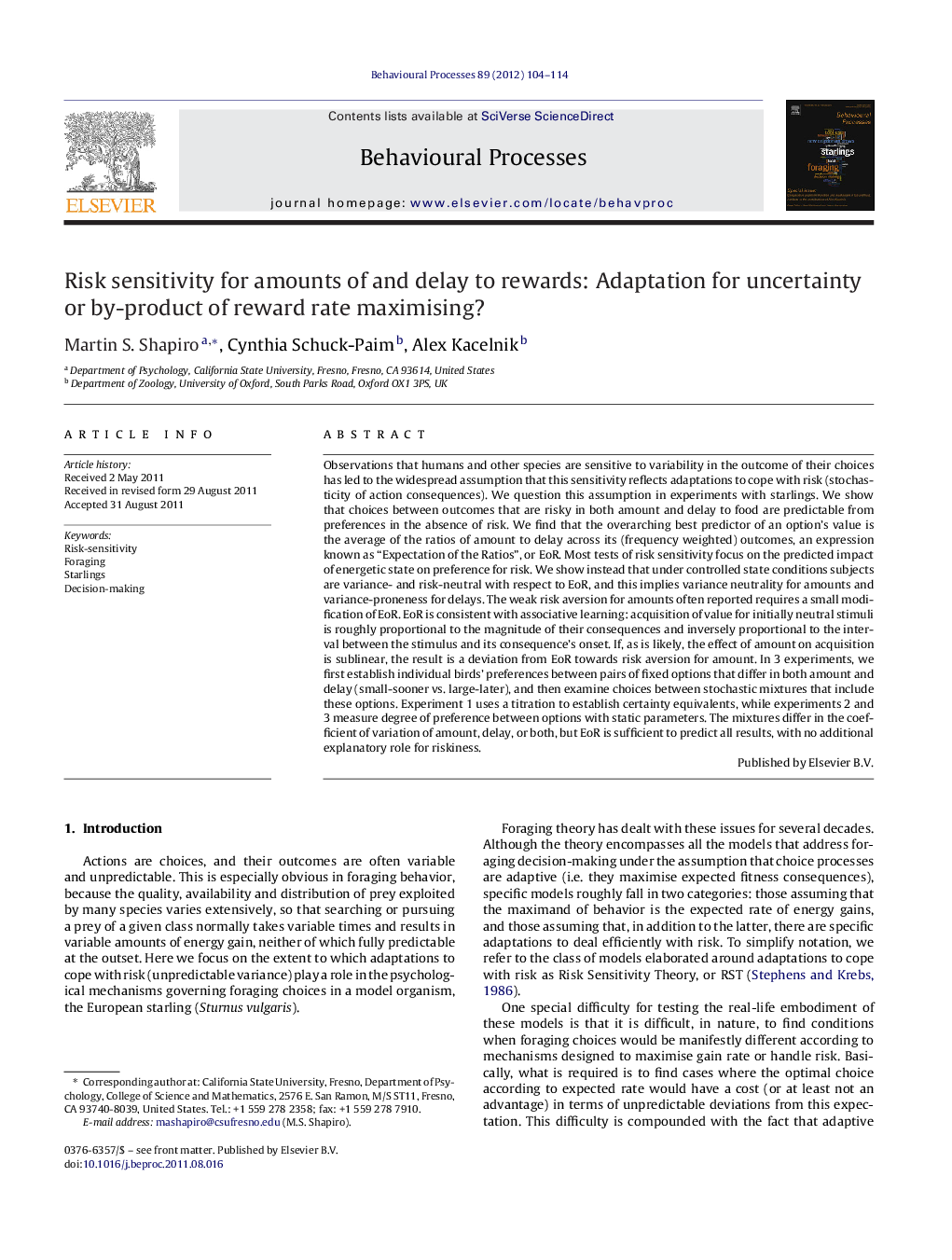| کد مقاله | کد نشریه | سال انتشار | مقاله انگلیسی | نسخه تمام متن |
|---|---|---|---|---|
| 2427006 | 1105937 | 2012 | 11 صفحه PDF | دانلود رایگان |

Observations that humans and other species are sensitive to variability in the outcome of their choices has led to the widespread assumption that this sensitivity reflects adaptations to cope with risk (stochasticity of action consequences). We question this assumption in experiments with starlings. We show that choices between outcomes that are risky in both amount and delay to food are predictable from preferences in the absence of risk. We find that the overarching best predictor of an option's value is the average of the ratios of amount to delay across its (frequency weighted) outcomes, an expression known as “Expectation of the Ratios”, or EoR. Most tests of risk sensitivity focus on the predicted impact of energetic state on preference for risk. We show instead that under controlled state conditions subjects are variance- and risk-neutral with respect to EoR, and this implies variance neutrality for amounts and variance-proneness for delays. The weak risk aversion for amounts often reported requires a small modification of EoR. EoR is consistent with associative learning: acquisition of value for initially neutral stimuli is roughly proportional to the magnitude of their consequences and inversely proportional to the interval between the stimulus and its consequence's onset. If, as is likely, the effect of amount on acquisition is sublinear, the result is a deviation from EoR towards risk aversion for amount. In 3 experiments, we first establish individual birds’ preferences between pairs of fixed options that differ in both amount and delay (small-sooner vs. large-later), and then examine choices between stochastic mixtures that include these options. Experiment 1 uses a titration to establish certainty equivalents, while experiments 2 and 3 measure degree of preference between options with static parameters. The mixtures differ in the coefficient of variation of amount, delay, or both, but EoR is sufficient to predict all results, with no additional explanatory role for riskiness.
► Animals are typically risk averse with variability in amount and risk seeking with variability in delay.
► Three experiments investigate preference when options have variability in amount, delay or both.
► Experiment 1 uses a titration to establish certainty equivalents, while experiments 2 and 3 measure degree of preference between options with static parameters.
► Ratio of the expectations (EoR) and matching is sufficient to predict all results, with no additional explanatory role for riskiness.
Journal: Behavioural Processes - Volume 89, Issue 2, February 2012, Pages 104–114